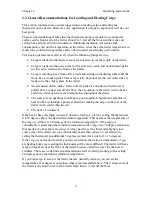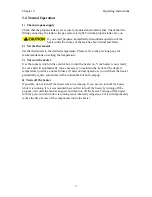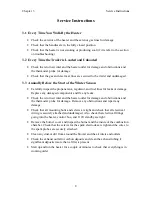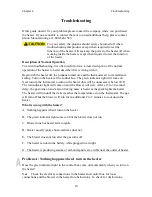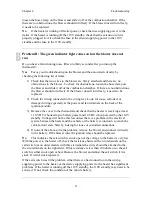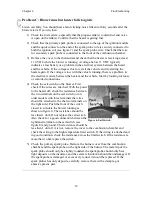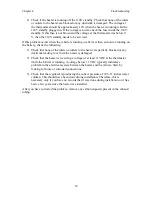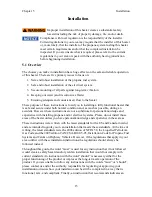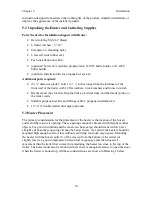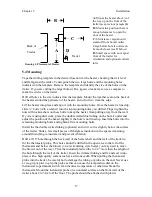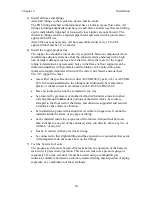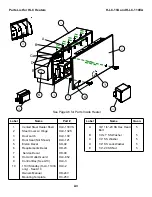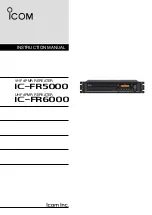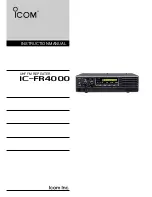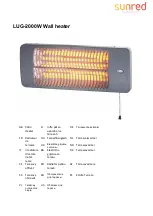
Chapter 5
Installation
3) Install all hoses and fittings
Attach all fittings to the regulators, heater, and the tanks.
The POL fitting attached to the tank must have a built-in excess flow valve. All
fittings including bulkheads must have wrench flat or similar way that each fitting
can be individually tightened or loosened (close nipples are not allowed). The
threads in fittings must be a tapered pipe thread and sealed with a joint sealant
approved for this use.
Attach the hoses as necessary. All hose assemblies must carry a CSA/UL
approved label and be 36” or shorter.
4) Install the copper propane line
The copper line should be run as directly as possible between components while
maintaining adequate clearance from the exhaust system and areas with a high
risk of impact damages such as above the tires. Once the route for the copper
tubing is determined, any necessary holes in the frame or floor supports can be
drilled and installed with grommets and the tubing can be pulled into place,
trimmed to length, deburred, fitted with the correct nut, flared, and attached.
The 3/8” copper line must
●
meet either the specification for either ASTM B 88 (Type K or L) or ASTM B
280. In Canada installations, the tubing must additionally be marked and
plastic or rubber coated in accordance with CAN/CSA-B149.5-05.
●
Have no joints and can not be extended in any way
●
be protected by grommets or another method with similar protection when
traveling through bulkheads or portions of the trailer frame, be securely
clamped to the front wall of the trailer, and otherwise supported and secured
to minimize the effects of vibration
●
be installed in a protected location that is visible for inspection. It cannot be
installed inside the frame or any pipe or tubing.
●
not be installed inside the cargo area of the vehicle. It should not be closer
than 4 inches to any part of the exhaust system, run directly above any tire, or
within 6” of any tire.
●
Not be in contact with any electrical wiring
●
be connected so that slight shifting and the expansion or contraction that occur
with temperature do not cause stress on the fittings
5) Test the System for Leaks
The propane system must be tested for leaks before the operation of the heater is
tested or it is placed into operation. This leak test must use a pressure gauge or
manometer. If a leak is found, it must be located using a combustible gas
indicator, suitable leak detection solution, isolated testing and inspection of piping
segments, or a combination of these methods.
20
Содержание LC series
Страница 1: ...Revision F Updated 2011 Elston Manufacturing LC Heater Owners Manual ...
Страница 2: ......
Страница 30: ......
Страница 32: ......
Страница 46: ...ELSTON MANUFACTURING INC 706 N Weber Sioux Falls SD 57103 1 800 845 1385 www elstonmfg com ...

